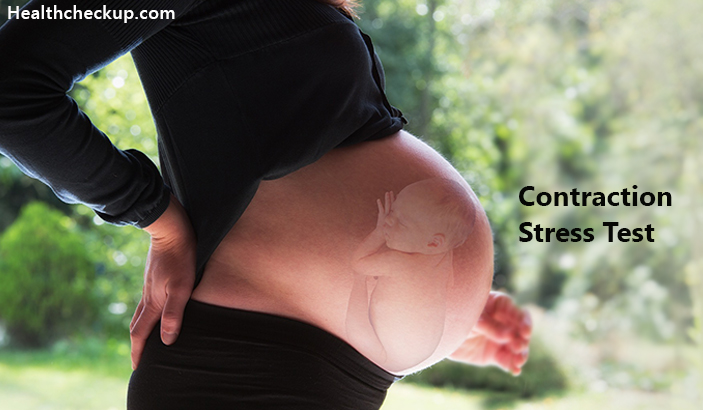What Is A Contraction Stress Test?
A contraction Stress Test is a kind of test usually done for pregnant women during the third trimester to understand if the baby is ready and healthy enough to bear the stresses of the labor, as the contractions cause low oxygen supply to the baby. Usually, almost every baby can handle this, whereas some suffer decreased heart rate which could lead to certain delivery complications. This is a type of antenatal fetal surveillance technique done so as to give contractions and observe the fetus heart rate abnormalities with a Cardiotocograph. Tocodynamometer is used to monitor uterine activity. A positive contraction stress test is not what one requires.
Who Should Get This Test Done?
This test is done in women with high-risk pregnancies or in the cases of any abnormalities in other tests. CST is not done for those with preterm labor, had a C-section, pregnancy with twins or multiples, uterine surgery, or any such complications. There are also chances that some pregnant women may get multiple Contraction Stress tests. Nonstress tests or a biophysical profile are more often prescribed tests recently unlike earlier when CST was more common. Now Doctors suggest CST only if the Nonstress test or biophysical test shows any concerns.
Difference Between Non-stress Test And Contraction Test
A Nonstress test has nothing to worry about for the baby or the pregnant woman. This non-invasive test involves no physical risks as it involves nothing that gives stress on the baby or the pregnant women. This test gives reassurance about the baby’s health. Also, be informed that a Nonstress test is prescribed in the cases of pregnancy loss chances. But, these test results are not the final call, and is not always clear about how helpful this test is.
On the other hand, a Contraction stress test is done to check if the baby can tolerate the delivery labor and monitors the baby’s heart rate responds to uterus contractions.
How Is A Contraction Test Performed?
During the CST, you will have to lie down wearing two belts with sensors around your belly. One belt to measure the baby’s heart rate while the other to measure your contractions. The doctor will create labor by either giving oxytocin in low doses with an IV to the arm or by rubbing your nipples, as this triggers oxytocin flow naturally. The test is conducted for about 10 monitors for at least 3 moderate and strong contractions to appear. Once the test is done the patient has to rest for the contractions to subside and hence the test usually takes around 2hours.
CST is safe in general but at times it ignites early labor. However, worry not as long as your doctor is around and helps you in understanding and measuring the risks and benefits of the test.
Contraction Stress Test Negative
The results of the test are very useful in understanding the baby’s health for the coming one week. The test results can be learned right away. A normal contraction stress test means a negative value. The normal or negative result is also known as reactive. This Negative contraction stress test strip result means that your baby heart rate hasn’t slowed down during the contractions induced.
Negative or normal test results indicate that your baby’s heart rate will not decelerate during the test and then remain slow post the test. There are chances that the baby’s heart rate may slow down, but, as long as the heart rate stays slow that is not a concern to be worried about. This means that the baby is anticipated to withstand labor stress.
Contraction Stress Test Positive
If the contraction test results turn out as abnormal then it is called the positive test which means that there are chances for the baby to have problems during normal delivery. In a positive test results case, the heart rate of the baby decelerates and remains slow even after the contractions. This is an indication of complexities during normal delivery as the baby can’t bear the stress due to contractions.
[Also Read: Birth defects during pregnancy]
Contraction Test Results
The CST test results are interpreted by the existence and absence of the baby’s heart rate decelerations. The results are used to determine if the baby can sustain the delivery pain and contractions. The results of the test are only considered for 1 week. So, in the cases where needed, this test is done at regular intervals during the pregnancy.
There are also chances of false-positive results wherein the baby’s heart rate is shown as slow down whereas the baby is not actually showing any problems.
In short, this CST can be considered for ruling out any concerns in spite of considering it for diagnosing. Many women have healthy babies even after a positive test result.

Sudheendra is a passionate blogger for 8 years and holds a Degree in Journalism & Mass Communications. His writings particularly focus on health, medicine, diet & lifestyle. For him, everything that interlinks and relates to health & medical world entices him. His write-ups aim at educating people not by just giving facts but by infusing human touch.








